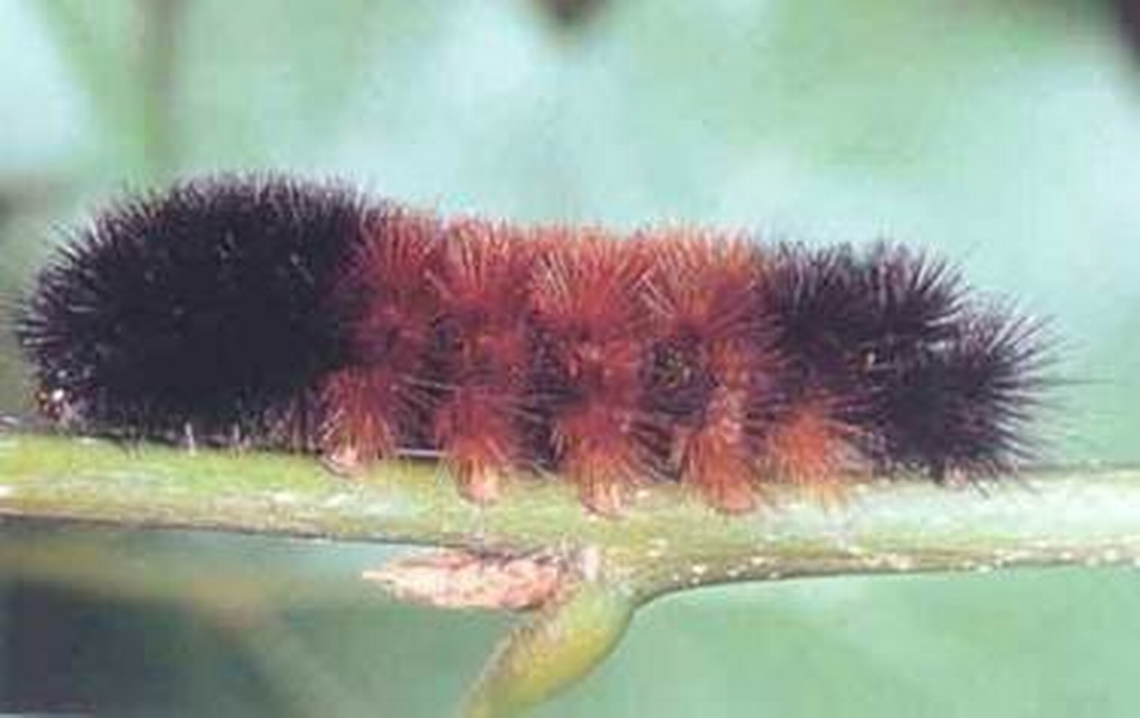A woolly worm makes the winter forecast in NC. How’s he doing so far this year?

It’s not enough that we have the N.C. State Climate Office, local branches of the National Weather Service and internet access to computer weather modeling from around the world.
For winter forecasts, we want a second opinion, and we like for it to come from a source that has fur or extra sets of legs.
Until he retired in 2023, we had Sir Walter Wally, the groundhog-in-residence at the N.C. Museum of Natural Sciences in Raleigh, who appeared publicly every Feb. 2 to offer his prognostication. Like other groundhogs, he had a simple formula. If he saw his shadow, we were in for six more weeks of winter. No shadow, and we should expect an early spring.
The town of Garner has its own groundhog forecaster, Snerd, whose verdict was declared in a ceremony last week at White Deer Park. Early spring!
In Apex on the same day, Sylvia the hairy armadillo agreed with Snerd when she appeared before students and teachers at Olive Chapel Elementary School. Another vote for early spring!
Real spring doesn’t start until March 19, so it’ll be a while before we can judge those varmints’ veracity.
But we already have another critter’s conjecture on the kind of winter we’re supposed to be having, so let’s compare that forecast to the historical record so far.
What did the woolly worm say?
Every third weekend of October since 1978, crowds have gathered in Banner Elk for the annual Woolly Worm Festival, conceived of by the late Jim Morton, son of Grandfather Mountain attraction founder Hugh Morton. Jim Morton was said to have been fascinated by the folklore associated with bugs and caterpillars and thought celebrating the woolly worm would be a fun way to extend the mountain town’s tourist season.
The festival now attracts thousands for craft and food vendors and Saturday woolly worm races, in which the fuzzy contestants get timed in their ascent up a 32-inch string.
A winner is chosen after many heats, and for its prowess, it gets to make the official winter weather forecast based on the color blocking of its 13 brown and black segments, correlating each segment to a week of winter.
Former N.C. State University and NBA basketball player Tommy Burleson, who lives in Newland, not far from Banner Elk, is the honorable woolly worm reader.
Last year, after studying the color makeup of a speed-demon named Jeffrey, Burleson said the caterpillar called for:
▪ Weeks 1-5: below-average temperatures and snow
▪ Week 6: below-average temperatures with light snow or frost
▪ Weeks 6-7: average temperatures
▪ Weeks 8-10: above-average temperatures
▪ Weeks 11-12: below-average temperatures with light snow or frost
▪ Week 13: below-average temperatures and snow
Our methodology + Jeffrey’s success rate (so far)
We’re only about halfway through astronomical winter, so that gives us just over six weeks of woolly worm forecast to compare to actual weather, which we culled from Weather Underground, and historical averages, which we took from the National Weather Service.
We also wanted to compare Burleson’s reading of the six-legged larva of the Isabella tiger moth to the tentative guess of a national agency with supercomputers and human brains behind it.
So for the record, the National Weather Service, which does not like to do long-term forecasting because of low reliability, predicted a generally warmer-than-average and wetter-than-average winter for North Carolina as a whole.
Organizers of the Woolly Worm Festival know what they’re up against, acknowledging on their website that “Scientists don’t believe the worms have weather forecasting powers. They argue the varying colors are caused by temperature levels and, possibly, moisture, during the early days of their life. Of course, over the last 20 years the worms have an 85 percent record for accuracy. Maybe the scientists are jealous.”
For an apples-to-apples comparison, we took weather data for Banner Elk because, though they may be precious, woolly worms are provincial in their forecasting, and can only make predictions about the area where they were found.
So far, Jeffrey’s success rate is below ectotherm expectations.
▪ The below-average temperatures he predicted for weeks 1-6 did not materialize; in fact, temperatures have been mostly above average in Banner Elk this winter, as the Weather Service said they would be. Woolly worms may not know about El Niños.
▪ However, Jeffrey called for snow in December and January, and Banner Elk got snow five of the six weeks he predicted. The Weather Service might say it also got that right because it called for more precipitation than normal.
We have six more weeks to see which one comes closest. We’ll be watching.
What’s up with ‘Super El Niño’ in NC? From an Arctic Blast to blasting the A/C
It’s been almost 2 years since it snowed in Raleigh. Could it still happen this winter?

